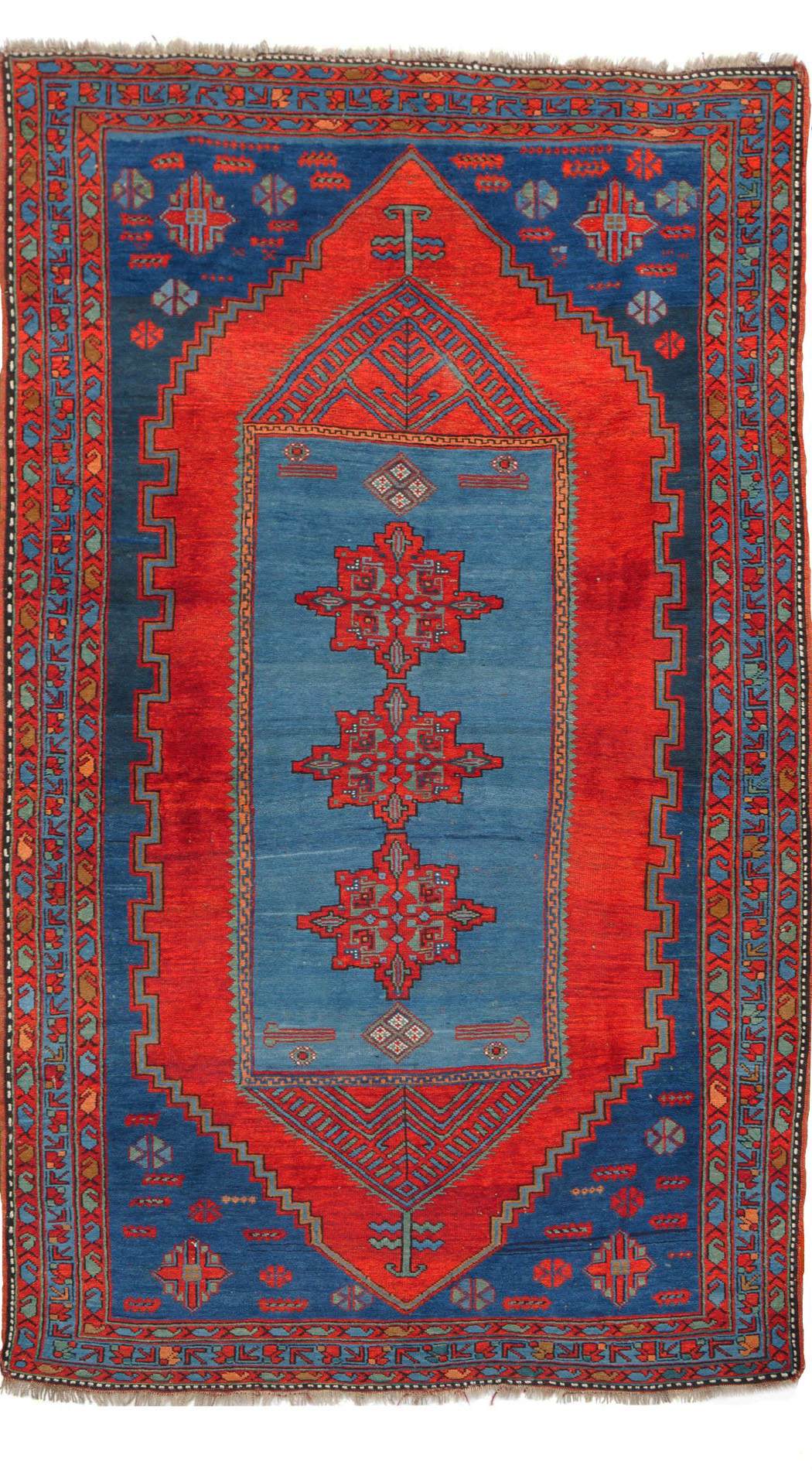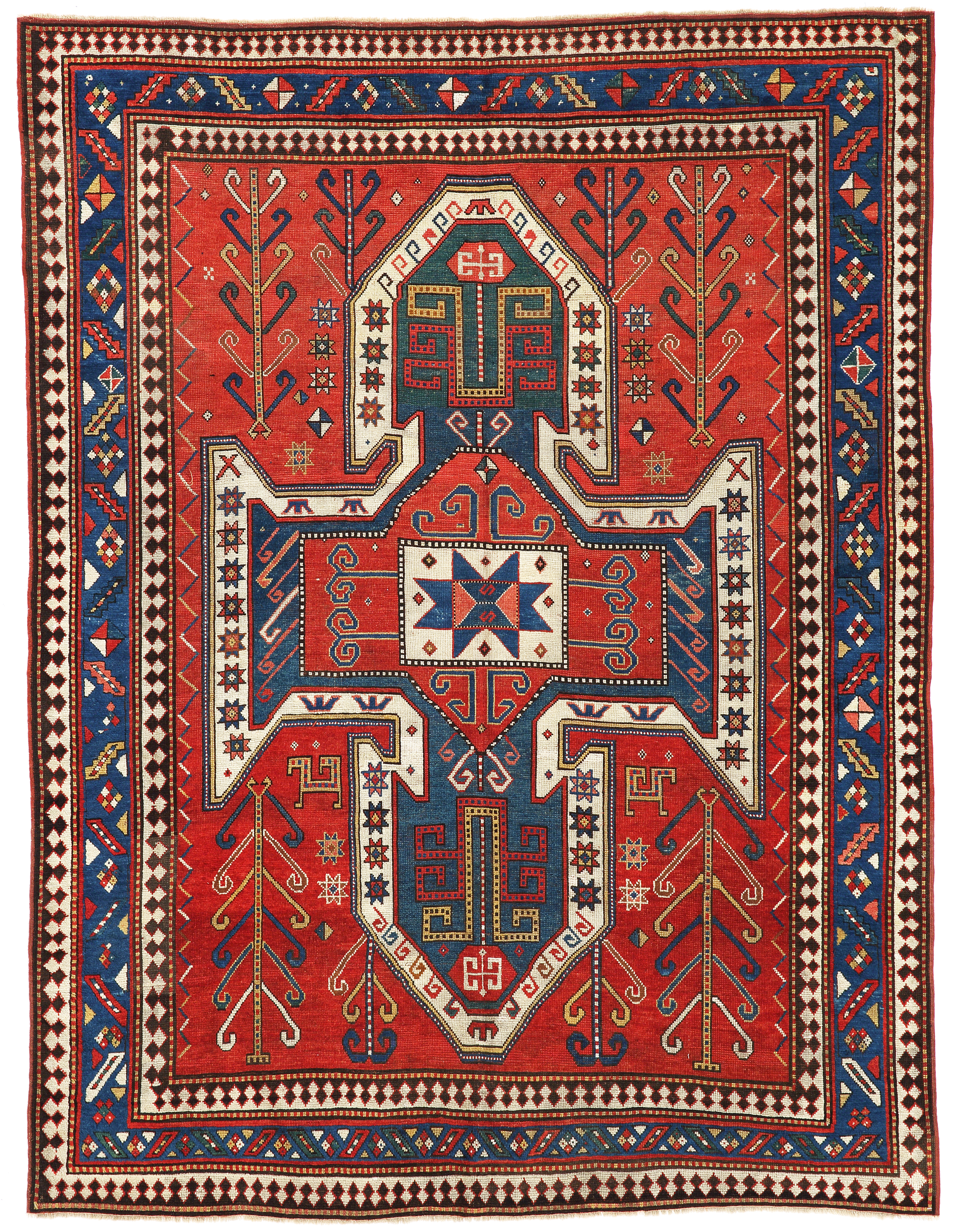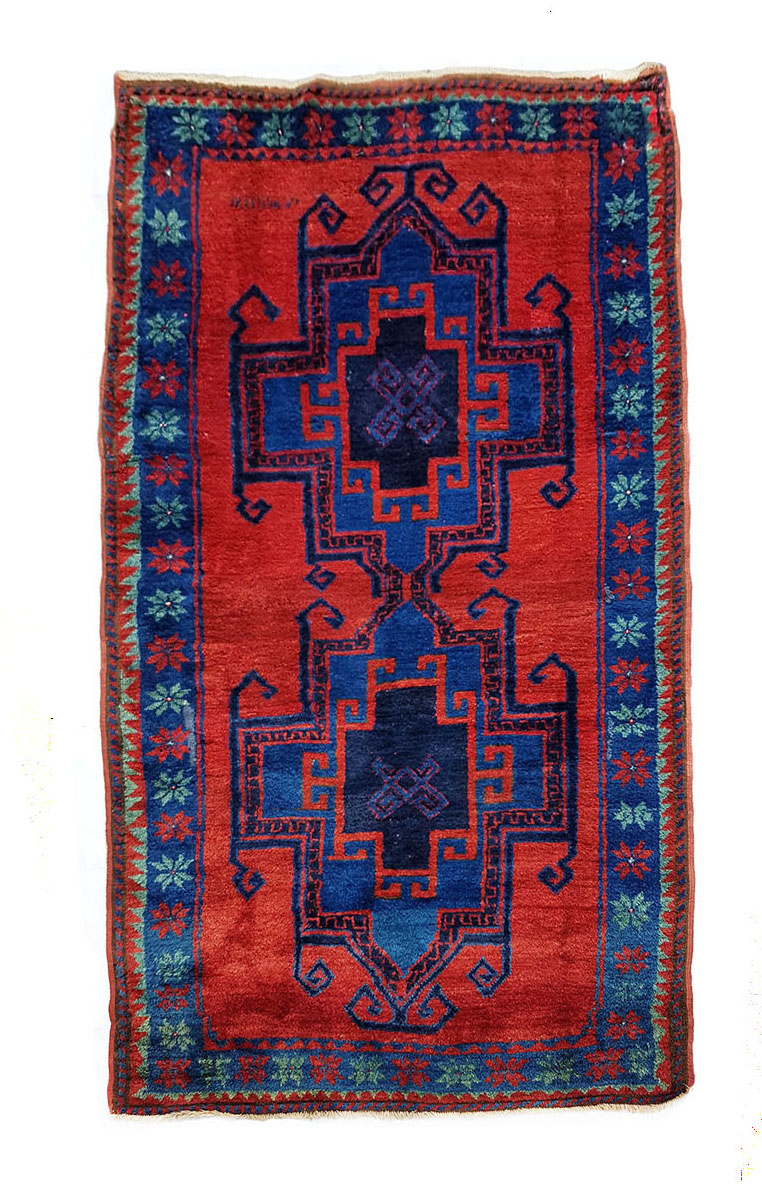In the attempt to define a Kazak rug, many collectors focus obsessively on geography. Kazak rayon is but one administrative part of present-day Azejberjan. It shares history and, to an extent, ethnicity with the entire Caucasus.

Formerly, approximately up to the 19th century, Azejberjan was part of the Persian Empire. As a result of numerous wars, political and ideological changes, the country has in the end, but only in part, acquired its independence
A large section, East Azerbaijan along with its capital Tabriz, remains in Iran.
The Caucasus is ethically very complex; its history witnessed great many migrations; Turkic tribes moving West, Georgians and Armenians moving East.

Owing to this peculiarity of the entire region, the Azeri and most Western scholars en suite, view Kazak as a Caucasian rug originating from villages within Kazak and the surroundings; other parts of the country (Akstafa and Tovuz) and some territories abroad (Borchalou in Georgia and Lake Sewan, formerly Goycha, and Fachralo in Armenia).

The Lake Sewan district includes such Kazak works as Lori Pambak, Lombala, Yeravan and of course Lake Sewan (often referred to as) Shield Kazaks.

All these rugs may feature different weaving techniques or materials, they share several patterns and colours leaving, for the most, a large margin for unpredictability and creative whimsicality more or less typical to their geography and ethnicity.
All these rugs form what is defined in the Caucasian antique carpet scholarship ‘the Kazak school’.
This lovely Armenian rug is a good example of the Kazak school rugs transcending its geographic boundaries.
Rugs from a small village of Gymyl in Kuba district share many common characteristics with Kazak works (see below):
Other clearly distinguishable schools within the Caucasus are:
1. Kuba
2. Baku or Absheron
3. Shirvan
4. Genje
5. Fachralo
6. Karabakh
To be continued …


